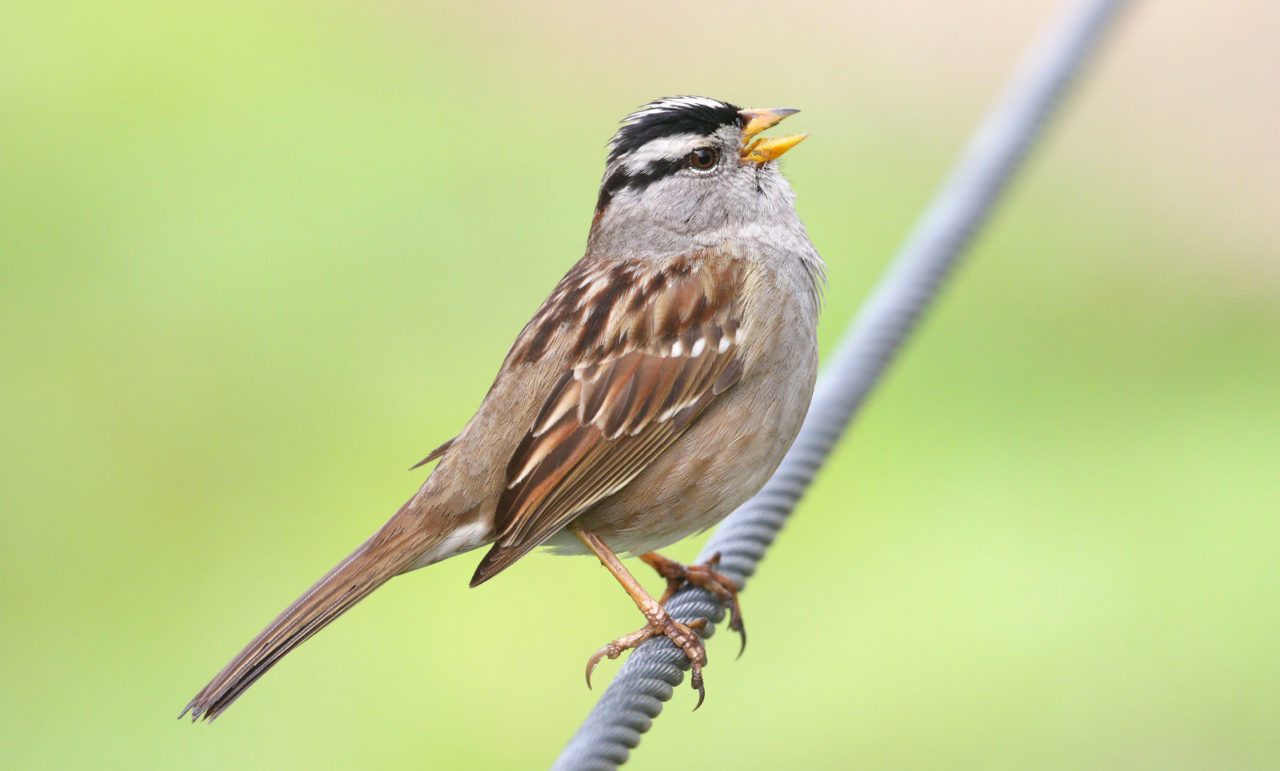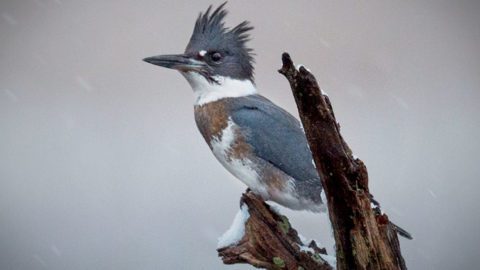A City Gets Quieter in 2020, and White-crowned Sparrows Change Their Tune
By Marc Devokaitis
December 20, 2020
From the Winter 2021 issue of Living Bird magazine. Subscribe now.
During the pandemic shutdowns in America last spring, San Francisco instituted a shelter-in-place order. The Financial District emptied out, few cars crossed the Golden Gate Bridge, and the din of rush hour became a whisper.
Research published in the journal Science in October shows that White-crowned Sparrows in the Bay Area got quieter, too. And that’s a good thing.
Lead author Elizabeth Derryberry, an ecologist at the University of Tennessee, Knoxville, has been studying how noise pollution affects birds in the San Francisco area for more than a decade. She says that when the city’s soundscape grew hushed, White-crowned Sparrows quickly started singing at lower volumes and lowering the frequency of their lowest notes.
Back in the 1970s the sparrows around San Francisco sang softer, much like they did last spring. But as the Bay Area got bigger, busier, and louder, the sparrows adjusted accordingly. A study from 2012 coauthored by Derryberry showed that between 1969 and 2005, male White-crowneds in the San Francisco area shifted to singing louder, higher-pitched songs. The extra amplification allowed the sparrows to project over the incessant and increasing background noise, but it came at a cost for breeding males: By raising the volume of their songs, and the pitch of the lowest notes they sang, the sparrows diminished the performance of their trills—something Derryberry says could make them less attractive to females.
“The wider the bandwidth, basically, the sexier they are,” Derryberry told Smithsonian magazine. “This gets at a fundamental trade-off that these birds in noisy areas are facing where they can’t be both sexy and transmit their song at a great distance.”
Ironically, even though White-crowned Sparrows were able to sing at lower volumes with the reduced background noise of the pandemic shutdown, their songs probably traveled about twice as far, since deeper pitches can move past obstacles better.
And because the sparrow songs weren’t being drowned out by ambient noise, they were easier for people to hear, too. Derryberry said the better acoustics for singing sparrows and other species could explain the numerous media reports about people saying they thought they heard the birds singing louder last spring.
“Covid-19 has been devastating in many ways for our society,” Derryberry says. But she also says that one of the “bright spots has been how much more people are noticing birds, particularly in cities, around the world.”
Derryberry and her team plan to continue their research in future springs as lockdowns are lifted and ambient noise levels presumably return to higher levels.

All About Birds
is a free resource
Available for everyone,
funded by donors like you
American Kestrel by Blair Dudeck / Macaulay Library



